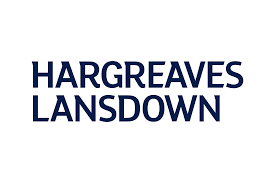Investing can be a complicated task for many, especially as the language surrounding it can be a little elitist at times. Here are some of the most commonly used investment terms defined in summary. They’re ones that you may have been too afraid to ask what they mean yet really need to understand!
Over the coming weeks, we will be delving more deeply into each term or phrase so you can gain an even more in-depth understanding of what each subject means. Gaining detailed insight into each will give you an excellent grounding to make informed investment decisions for your future.
Discover the UK's leading investment platforms, whatever your investment goals. Click on a provider below to get started!
Diversified Portfolio
A diversified portfolio is a selection of investments held by one person. Those investments have been structured into one portfolio in a specific way. Doing so mitigates against as much risk as possible. Portfolio diversification can do so as different asset classes are not correlated to one another. Thus, by buying across several asset classes, you are not exposing yourself to the same risks.
Asset allocation
Asset allocation is how much of your portfolio you want to assign to one particular type of investment. For example, a portfolio may comprise of 25% stocks, 25% bonds, 25% ETFs and 25% currencies. Each individual investor will have a different approach to asset allocation. An investor will choose asset allocation depending on all assets’ risk versus return.
Dividend
A dividend is a payment that companies give their shareholders at certain times. It is a way that companies listed on stock exchanges reward their investors for investing in the company. It is also seen as a way of redistributing a company’s earnings.
FAANG Stocks
FAANG is an abbreviation for a handful of specific companies that are publicly listed and traded. They are Facebook, Apple, Amazon, Netflix and Google (owned by Alphabet). They are predominantly Tech companies. They received a great deal of notoriety through their price gains before and throughout the Covid-19 pandemic.
Types of Bond
The phrase “types of bond” is a bit of a misnomer. A bond is a bond at the end of the day. It is a financial product where an investor gives a company money for an agreed amount of interest for an agreed amount of time. So when people refer to types of bond, they are actually referring to how risky a bond is deemed to be. There are varying levels of risk that bonds are seen to have. The lowest risk bond is where a bondholder can be pretty sure that they will receive back all of their original investment. The riskiest type of bond is one whereby that certainty is considerably less - but the rate of return is consequently higher.
The ‘types’ of bond most commonly referred to are:
Government Bonds - these are bonds issued by Governments as a way to raise funds. Government bonds are typically seen as very safe, especially in rich countries like the USA or UK.
Investment Grade Corporate Bonds - these bonds are bonds issued by companies. Those companies can be both privately owned or publicly traded. The bonds with lower rates of return will be the ones seen as a reasonably safe investment.
High Yield Bonds - these bonds are graded relatively poorly by ratings agencies. As a result, they often receive a higher return rate than other bonds (where characteristics are otherwise the same, like a bond’s maturity, for example).
Types of Shareholder
It is possible to buy stocks in different ways. That produces various types of shareholder. Different types of stocks give you different rights should a company go bankrupt or should a company be distributing a dividend. They are known as preferred shareholders and common shareholders. They mean:
Preferred shareholders: Preferred shareholders do not have any voting rights. Therefore, they are compensated in other ways to make up for not having a say in how the company is run. As a result, preferred shareholders are often the first recipients of any dividends, and those dividends can often be larger.
Common shareholders: Common shareholders can vote at a company AGM - or any other time a company puts a vote to its shareholders over key decisions. They will still receive dividends when they are disseminated, but they will not receive as large an amount as a preferred shareholder.
Fixed Income
Fixed income is another term for a bond. Bonds are known as fixed income as bondholders receive a fixed amount of money on regular dates, thus providing an income.
Index Funds
An index fund is a fund that is set up to reflect an index. As a result, it is possible to ’buy’ an entire index, but just a small proportion of it, by purchasing part of an index fund. They are popular with individuals who want to invest passively and not have to pick specific stocks to enjoy returns. Instead, they make money when entire markets rise and lose money when entire markets fall. They tend to benefit from lower fees, too, due to lower transaction costs required.
Derivatives
A derivative is a financial contract that is based on another financial asset. Two parties enter into an agreement about payment that depends on the value of the underlying asset. It is sometimes referred to as a bet, as one side of the party will think the asset will increase in value, while the other will believe it will decrease. The party who receives payment is the one who is right!
Cryptocurrencies
A cryptocurrency is a currency that is not linked to a country. It is a form of digital money that can be used to buy goods and services online. Some cryptocurrencies are traded online too. Each crypto or coin has a key that is impossible to crack so that it cannot be counterfeited.
Hedging
Hedging is a form of risk mitigation. Fund managers often implement hedging strategies. They do so to help minimise any potential losses should those losses be realised in future. A good example would be a fund manager who wants to hedge against a currency decrease which affects the amount of return their funds receive. Currency fluctuations can act as a drag, so fund managers ‘hedge’ against it to protect their downside.
Forex
Forex stands for foreign exchange. At its most rudimentary level, it is simply when an individual changes their home currency into a foreign currency when going on holiday. However, many financial institutions partake in Forex at much larger scales as a way of making money on currency fluctuations.
Investment terminology you were too scared to ask about
These are just brief outlines of complicated investment jargon. We will be investigating each one in far more detail over the next few weeks, so keep an eye out for them if you want to know more about what each phrase means. Doing so can really help deepen understanding which can strengthen investment outlooks and decisions.







